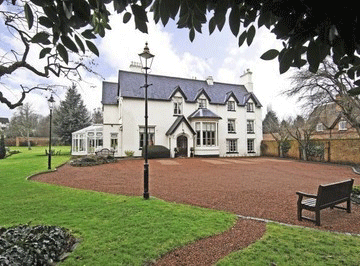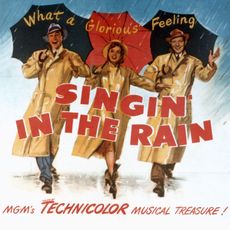Central to village life – The Old Rectory
Melanie traces the inhabitants of a fascinating old rectory in Nottinghamshire

For villages across the UK rectories, parsonages and vicarages have long played a vital role in village life. These historic homes vary from medieval timber-framed homes through to grand Edwardian mansions and still today many continue to be used by the church. However, in many places across the country they have changed use and many become private homes.
This is the case with my latest house, on the market with Chesterton Humberts, The Old Rectory in Thurgarton, Nottinghamshire. The Old Rectory was constructed in 1850 with the sole purpose of becoming the new home for the vicar of Thurgarton. Today, the Old Rectory sits along historic Beck Street described as a ‘typical rural English village scene'.
Before 1850 the villagers of Thurgarton were in the hands of Reverend J. T. Becher of Southwell, who had been curate since 1799, and who looked after the parishioners of Southwell and Thurgarton until he passed away in 1848. It was at this time that a new position was created for a curate in Thurgarton - who would be provided with a brand new rectory.
The land and patronage were owned by Trinity College Cambridge and they had a new house built, first known as The Manor House, for the new curate. A plan and illustration of the house from 1848 has survived (held in the Nottinghamshire Archives) to show the original plan and layout of the land and shows that very little has changed in 160 years.

* For more properties like this every week, subscribe and save
The first vicar to move into the new house was Reverend Henry Lea Guillebaud. At the time of the 1851 census Guillebaud was unmarried and 33 years old, with three live-in servants in the house. Reverend Guillebaud remained in Thurgarton for 20 years, by which time he had married and had three children. In 1872, Guillebaud was replaced by Reverend Atwell M. A. Baylay, who by 1881 was 38 years old and living in the house with his 23 year old wife, Alice.
Reverend Baylay remained vicar for close to 50 years and it is fascinating to imagine the many people of Thurgarton popping into the house to have a chat and a cup of tea with the vicar over the years. Baylay not only fulfilled his duties as vicar but assisted in a number of other projects in the village, including the opening of a convalescent home for children recovering from Tuberculosis, known as The Whitehouse. Baylay was also an avid amateur historian and completed a number of papers on historical subjects, including the history of churches in the area.
Sign up for the Country Life Newsletter
Exquisite houses, the beauty of Nature, and how to get the most from your life, straight to your inbox.
In 1935, the new vicar, Reverend George Herbert Halstead decided that the house was too large for his needs and requested the building of a new rectory. The old rectory was sold back to Trinity College Cambridge and the money put towards the building of a new house. Very few documents survive for the war years giving little idea of what happened to the house, but in 1946 we find it had become the family home of Norman and Margaret Wigley. The house, now officially named The Old Rectory, has remained a large family home ever since.
* More details on The Old Rectory
* Read the full history of the house - visit my blog, The House Historian
Country Life is unlike any other magazine: the only glossy weekly on the newsstand and the only magazine that has been guest-edited by HRH The King not once, but twice. It is a celebration of modern rural life and all its diverse joys and pleasures — that was first published in Queen Victoria's Diamond Jubilee year. Our eclectic mixture of witty and informative content — from the most up-to-date property news and commentary and a coveted glimpse inside some of the UK's best houses and gardens, to gardening, the arts and interior design, written by experts in their field — still cannot be found in print or online, anywhere else.
-
 A remarkable $100 million numismatic collection reappears after being buried for more than 50 years
A remarkable $100 million numismatic collection reappears after being buried for more than 50 yearsA collector hid his treasure from the Nazis, his widow kept it secret for decades, but now Roman aurei, Greek staters and British pounds so rare that some have never been sold at public auction have resurfaced and will go under the hammer.
By Carla Passino Published
-
 The Hollywood legend with an even more famous daughter: Country Life Quiz of the Day
The Hollywood legend with an even more famous daughter: Country Life Quiz of the DayFrom buns to bubbly in Wednesday's Quiz of the Day.
By Toby Keel Published

